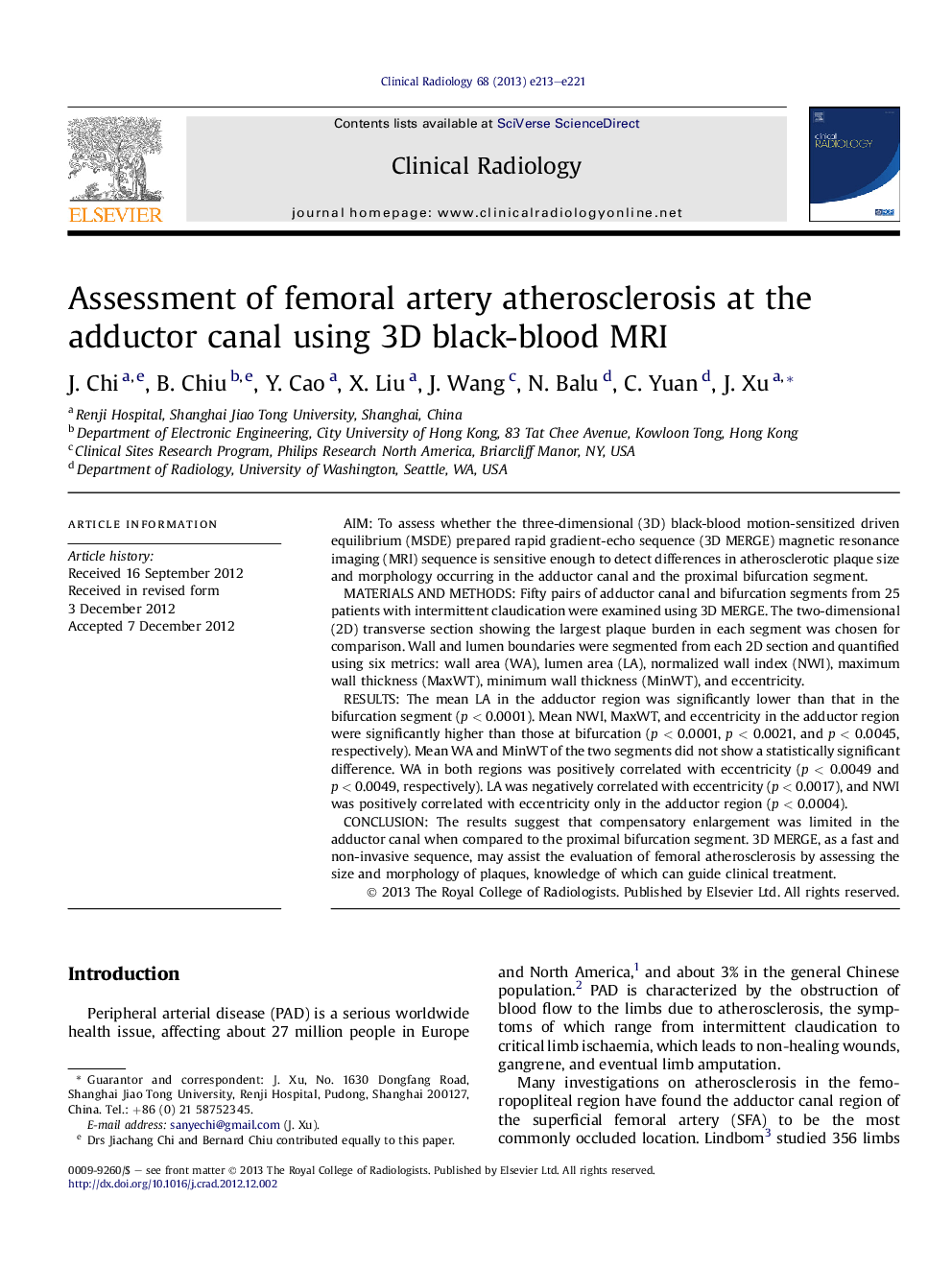| Article ID | Journal | Published Year | Pages | File Type |
|---|---|---|---|---|
| 3981609 | Clinical Radiology | 2013 | 9 Pages |
AimTo assess whether the three-dimensional (3D) black-blood motion-sensitized driven equilibrium (MSDE) prepared rapid gradient-echo sequence (3D MERGE) magnetic resonance imaging (MRI) sequence is sensitive enough to detect differences in atherosclerotic plaque size and morphology occurring in the adductor canal and the proximal bifurcation segment.Materials and methodsFifty pairs of adductor canal and bifurcation segments from 25 patients with intermittent claudication were examined using 3D MERGE. The two-dimensional (2D) transverse section showing the largest plaque burden in each segment was chosen for comparison. Wall and lumen boundaries were segmented from each 2D section and quantified using six metrics: wall area (WA), lumen area (LA), normalized wall index (NWI), maximum wall thickness (MaxWT), minimum wall thickness (MinWT), and eccentricity.ResultsThe mean LA in the adductor region was significantly lower than that in the bifurcation segment (p < 0.0001). Mean NWI, MaxWT, and eccentricity in the adductor region were significantly higher than those at bifurcation (p < 0.0001, p < 0.0021, and p < 0.0045, respectively). Mean WA and MinWT of the two segments did not show a statistically significant difference. WA in both regions was positively correlated with eccentricity (p < 0.0049 and p < 0.0049, respectively). LA was negatively correlated with eccentricity (p < 0.0017), and NWI was positively correlated with eccentricity only in the adductor region (p < 0.0004).ConclusionThe results suggest that compensatory enlargement was limited in the adductor canal when compared to the proximal bifurcation segment. 3D MERGE, as a fast and non-invasive sequence, may assist the evaluation of femoral atherosclerosis by assessing the size and morphology of plaques, knowledge of which can guide clinical treatment.
